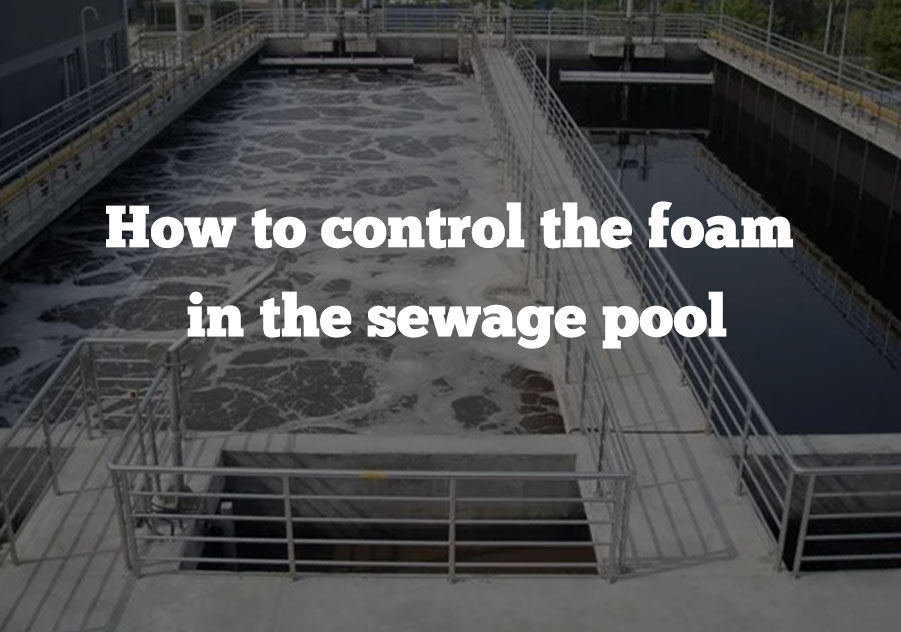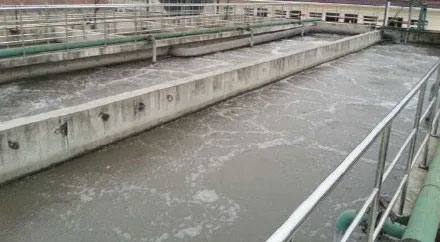 +86-15267462807
+86-15267462807

The foam in the sewage pool itself is not a big problem and will not have a big impact on the effluent, but it can easily cause serious pollution to the external pool wall of external equipment, worsen operating conditions, and seriously affect the surrounding environment.
Types of sewage foam
Startup foam
1. At the beginning of the aeration tank startup, the sludge in the aeration tank is not adapted to the water quality of the sewage and the growth environment, which is easy to form foam. As the sludge adapts to the water quality, the foam will decrease.
2. At the beginning of the aeration tank startup, there is relatively less sludge and the sludge load is high, which is easy to produce foam. After the sludge volume increases, the foam will gradually disappear.
3. At the beginning of the activated sludge process operation, due to the presence of some surfactants in the sewage, surface foam is easy to occur. As the activated sludge matures, these surfactants are biodegraded and the foam phenomenon will gradually disappear.
Denitrification foam
When the activated sludge treatment system is operated at a low load, denitrification will occur in the sedimentation tank or in places where aeration is insufficient, and nitrogen will be produced. The release of nitrogen will reduce the sludge density to a certain extent and drive some sludge to float, resulting in foam. The resulting suspended foam is usually not very stable.
Surfactant foam
Surfactants and surfactants such as starch, protein, and oil in sewage are all expressed in molecular structures as containing polar-nonpolar groups, namely so-called amphiphilic molecules.
Under aeration conditions, one end of the non-polar group extends into the bubble, while the polar group is selectively adsorbed by the hydrophilic substance, so that the surface of the hydrophilic substance is converted into a hydrophobic substance and adheres to the bubble water film, floating to the water surface with the bubble.
Biological foam
1. Most of the microorganisms related to foam contain lipid substances. These microorganisms are lighter than water and easily float to the water surface.
2. Most of the microorganisms related to foam are filamentous or branched, easy to form a net, can capture particles and bubbles, etc., and float to the water surface. The bubbles surrounded by the silk net increase their surface tension, making the bubbles less likely to break, and the foam is more stable.
3. The flotation effect generated by aeration bubbles is usually the main driving force for foam formation. Particles that use bubble flotation must be small, light and hydrophobic. Therefore, when there are oil, lipid substances and lipid-containing microorganisms in the water, surface foam is easy to occur.

Foam control methods
Spraying water
High-speed spraying of water or water droplets can break the bubbles floating on the water surface, and some of the sludge particles that have been broken up can regain their sedimentation performance, which can reduce foam.
By spraying water, foam can be reduced. If the aerobic pool is sprayed, a long-term defoaming effect can be achieved.
Although spraying water cannot fundamentally defoam, it is a relatively simple and commonly used physical method.
Adding chemical agents
Adding chemical agents can solve the foam problem in a short time, and the operation is simple.
However, while adding chemical agents to solve the foam problem, it will also have a great impact on the sludge. Moreover, after using chemical agents, the water quality of the effluent will be greatly affected, and the treatment of the remaining substances will also be a problem.
Commonly added agents:
1. Adding chlorine and oxidants;
2. Adding coagulants;
3. Adding defoamers and vegetable oils.
Shortening sludge retention time
Reducing the sludge retention time of the aeration tank, that is, reducing the average cell retention time, can effectively control the biological foam in the activated sludge process.
Reducing the sludge retention time is essentially a biological screening strategy, that is, taking advantage of the long average generation time of foaming microorganisms, inhibiting the excessive proliferation of foaming microorganisms in the aeration tank or excluding them, so as to achieve the purpose of controlling biological foam.
Adding carriers to the aeration reactor
In some activated sludge systems, adding mobile or fixed fillers can make some microorganisms that are prone to sludge expansion and foam grow fixedly, which can increase the biomass in the aeration tank and improve the treatment effect, and can also reduce or control the generation of foam.